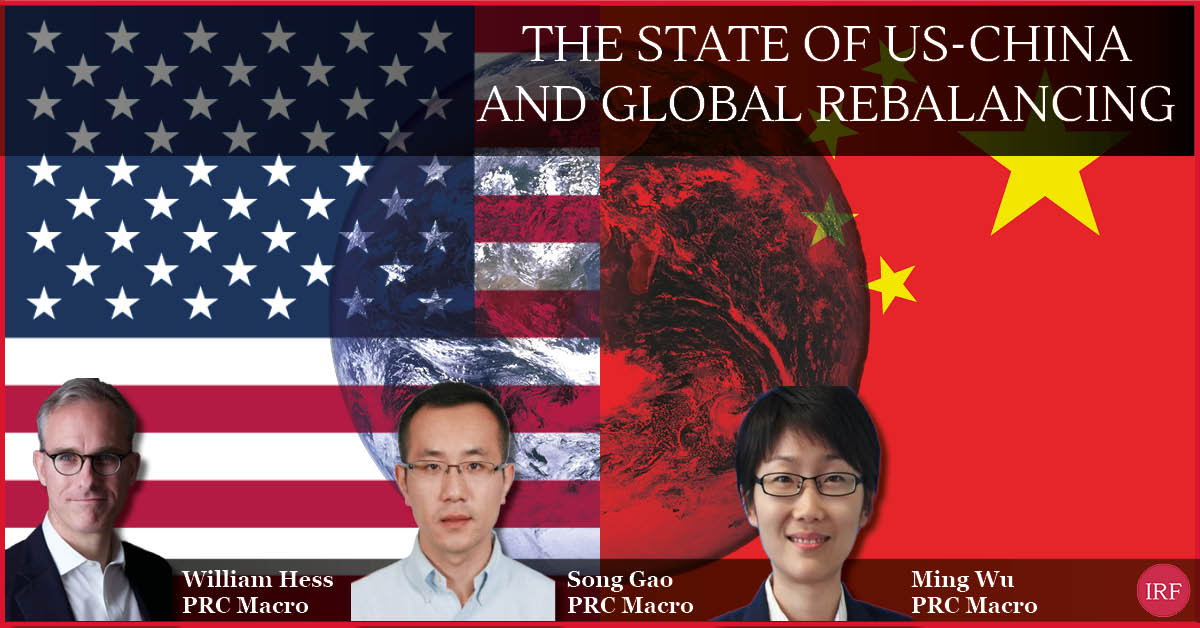The State of US-China and Global Rebalancing
PRC Macro
Wed 07 May 2025 - 14:00 BST / 09:00 ET
Summary
William Hess, Song Gao, and Ming Wu discussed the evolving state of US-China relations and broader global rebalancing, highlighting the ongoing process of secular decoupling between the two economies. They argued that structural and cyclical forces—such as systems competition, diverging energy and currency regimes (dollar-fossil fuel vs. RMB-renewables), and persistent G2 imbalances—are pushing the US and China into increasingly separate economic spheres. The team expects a bumpy but ultimately enduring regime of high tariffs, particularly targeting manufactured goods, and suggested average US tariffs on Chinese imports could settle around 40–50%. They noted that while both economies are absorbing the shocks, with moderate declines in activity, the bigger risk for China stems from weak systemic cashflow, overcapacity, and deflationary pressures, which make it more vulnerable despite reduced direct export dependence on the US. Song emphasized China's strategic decision not to devalue the RMB in response to tariffs, unlike during the 2018 trade war, instead maintaining a de facto dollar peg while letting the currency weaken against a broader basket. This shift aims to transfer the cost burden of tariffs to US consumers and maintain financial stability. Ming Wu outlined the tariff-induced headwinds for Chinese commodity demand, particularly steel and copper, noting that indirect exports such as machinery and home appliances would be more affected than direct metal exports. Despite resilient early-year steel demand, she warned of declining infrastructure-related spending, tighter project pipelines, and limited property sector support. Ming forecast moderate steel production cuts and trimmed copper demand expectations due to global CapEx uncertainty and domestic tariff-related pauses in renewable energy investments. Together, they concluded that while China retains structural competitive advantages in energy and supply chains, investment returns remain low, and rebalancing efforts will face persistent pressure from both domestic and international dynamics.
Topics
Impact of Trump tariffs on China’s economy
Effectiveness of China’s stimulus measures
Redistribution and rebalancing of global trade
Shifts in global portfolio flows
